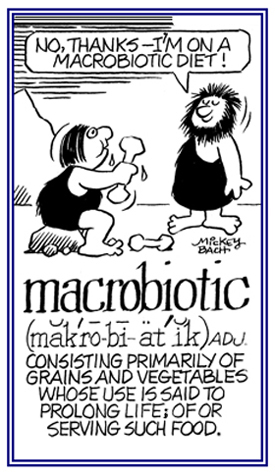bio-, bi-, -bia, -bial, -bian, -bion, -biont, -bius, -biosis, -bium, -biotic, -biotical
(Greek: life; living, live, alive)
Don’t confuse this element with another bi- which means "two".
The most important things in life are not things.
2. Flora and fauna composed of microscopical organisms.

Go to this Word A Day Revisited Index
so you can see more of Mickey Bach's cartoons.
2. The smaller of two symbiotic organisms.
There are two main types, known as ridge endings and bifurcations. Sometimes, other details; such as, the points at which scars begin or terminate, are considered minutiae.
The number and locations of the minutiae vary from finger to finger in any particular person, and from person to person for any particular finger; for example, the thumb on the left hand.
When a set of finger images is obtained from an individual, the number of minutiae is recorded for each finger. The precise locations of the minutiae are also recorded, in the form of numerical coordinates, for each finger.
The result is a function that can be entered and stored in a computer database. A computer can rapidly compare this function with that of anyone else in the world whose finger image has been scanned.
2. The statistics of the shape, size, and structure of living things or parts of them.
2. The symbiotic fungal constituent of a lichen.
Lichens are composite organisms containing one of the fungi and one of the algae or cyanobacteria in symbiotic association.
2. Physiologic or normal death of cells or tissues as a result of changes associated with development, aging, or use.
3. A state of degeneration of a part or tissue in which some portions are alive and others are dead.
2. Characterized by the physiological or normal death of cells or tissues as a result of changes associated with development, aging, or use.
3. Relating to the gradual degeneration and death of a part as a result of malnutrition; necrosis.


